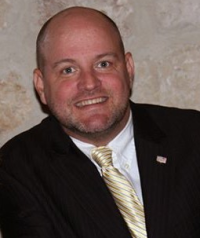What do you do?
As a mobility manager for a U.S. Department of Veterans Affairs (VA) hospital, I oversee the transportation resources and help arrange veterans’ rides for vital medical services. My program serves roughly 65,000 veterans and manages about 350 trips per day.
We ensure transportation for a variety of situations to serve those who have served our country. Imagine being an 80-year-old veteran on dialysis who can’t get to the hospital. Our program makes sure that they can.
What does a typical day look like?
When I arrive at the hospital, I check in with the dispatchers and review the weather forecast. I adjust the travel times and schedules based on issues like weather conditions, vehicle problems, or staff who are out sick.
I have meetings to help educate staff at my hospital about our transportation program and to answer any questions. I also may have some customer service duties, especially if I’m the first person to deal with any issues a veteran has.
And I help with emergencies as they arise. For example, we’ll send a car to pick up a veteran when they’re stranded because their car broke down. We also help with the veteran crisis line and will send a vehicle to pick up a veteran in crisis.
Describe some of your other tasks.
I have responsibilities related to administering and expanding the program. I work to build partnerships with clinics, hospitals, and civilian agencies. I teach hospital staff and servicemembers how to use our service and make hospitals aware of our standard operating procedures. I review the resources we have available, such as funding and vehicles, and search for new ways to expand our service. For example, we recently started using ride-share companies.
I also do paperwork, including reviewing and tracking contracts that we have for wheelchair or ambulance services and certifying bills that come in from those and other contractors.
What skills or qualities do you need to be successful in this line of work?
Time management is huge, and that includes having planning skills. The ability to multitask is also important. There are times when we have to tell people “no” and determine which cases to prioritize, so you need the ability to talk with people and troubleshoot ideas.
And we may have to calm down veterans who are upset. It’s important that we not drive any veterans away. I can relate to veterans on a personal level, having served in the military and having been injured overseas, so I use verbal and nonverbal cues to make that personal connection. For example, I’ll mention I retired as a first sergeant or roll up my sleeves to show my [Army-themed] tattoos and let them know I’m one of them. It can help de-escalate situations.
Tell me about your career path.
I dropped out of high school at 16, enlisted in the Army at 17, and obtained my GED shortly after enlisting. [Note: The military now requires either a high school diploma or GED prior to enlistment.] I took college courses throughout my career in the Army and received my bachelor’s degree while on active duty. I worked in transportation occupations throughout my military career and managed people all the way from a squad of 8 to a group of 150.
I retired from the Army after 22 years and took a position at the U.S. Department of Defense (DoD). I spent 4 years at DoD and completed my master’s degree in project management while there. I found the mobility manager vacancy announcement on USAJobs and applied for it. It was supposed to be a 3-year temporary position. But I’m still here 8 years later, and we’ve achieved great success in expanding rides and transportation services for veterans in our area.
What attracted you to the position?
I was injured in Iraq, and I still have pins and plates in my neck from when I broke it. I have experience receiving care through the VA. I wanted to give back and help our veterans.
This job means a lot to me. It’s more than a job: This saves lives. It doesn’t matter how hard the day is, I’m proud of what we do.
What advice would you give to someone interested in this occupation?
Volunteer with the VA, both to drive people and to help with the administrative work. And develop problem-solving skills. A lot of this job comes down to the ability to think clearly and having common sense.
What’s most challenging about your work?
The most challenging part of my job is saying “no” to veterans who need help but can’t get it because they don’t qualify for the benefit. I want to help every veteran, but I’m constrained by regulations and resources.
Also, seeing veterans pass away is very difficult. We get close to them over the years as we coordinate their appointments and rides.
What do you like best?
Knowing that I make a difference in the lives of so many people, like when a veteran comes in and gets cancer treatment for 40 days straight that they otherwise wouldn’t have had transportation to.
It’s so much more than just arranging for a ride. I get to help my fellow veterans have a better quality of life.
Ryan Farrell is an economist in the Office of Occupational Statistics and Employment Projections, BLS.


